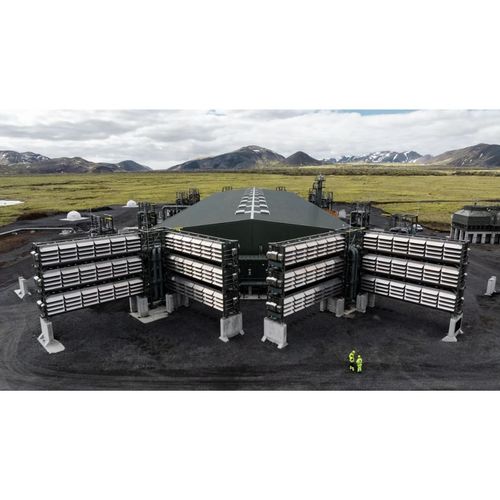Climeworks Starts Operations at World’s Largest Direct Air Capture Plant

Mammoth, the world’s largest direct air capture and storage plant, is designed for a nameplate capture capacity of up to 36,000 tons of CO₂ per year. // PHOTO: Climeworks
May 15, 2024
BY Climeworks
Advertisement
Advertisement
Related Stories
Vår Energi and licence partners, Storegga and INPEX Idemitsu Norge, announce that the Trudvang CO₂ storage project has successfully passed feasibility gate (DG1), marking a major step toward realising one of Europe’s most advanced and strategically located carbon storage hubs.
TGS, a global leader in energy data and intelligence, has partnered with Equinor to advance the digitalization of carbon capture and storage (CCS) operations. Their software delivers real-time, reliable data to enable more efficient workflows and informed decision-making across the CCS lifecycle.
Seabound Launches World-First Onboard Marine Carbon Capture Project with Hartmann, InterMaritime, and Heidelberg Materials
Seabound, a UK-based leader in marine carbon capture, has launched a first-of-its-kind onboard carbon capture project in partnership with Hartmann Group ("Hartmann"), InterMaritime Group ("InterMaritime"), and Heidelberg Materials Northern Europe. The captured carbon, bound in limestone and safely stored onboard, will be offloaded at the Port of Brevik, Norway, for use at Heidelberg Materials’ Brevik cement plant.
Carbon Clean announced the official opening of its new Global Innovation Centre (GIC) in Navi Mumbai, India. The GIC will be one of the world’s largest dedicated carbon capture research facilities, spanning 77,121 square feet and housing two carbon capture plants alongside state-of-the-art laboratories for solvent development, analysis, and testing. It will serve as a hub for research, innovation, and technology demonstration.
Frontier has facilitated offtakes with Arbor, a Bioenergy with Carbon Capture and Storage (BECCS) company that uses waste biomass to create clean energy while removing CO2. These offtakes will enable the launch of Arbor’s first commercial facility and test the viability of a new, highly efficient BECCS approach for generating clean electricity and removing CO₂. The facility, located near Lake Charles, LA, is expected to become fully operational in 2028.





